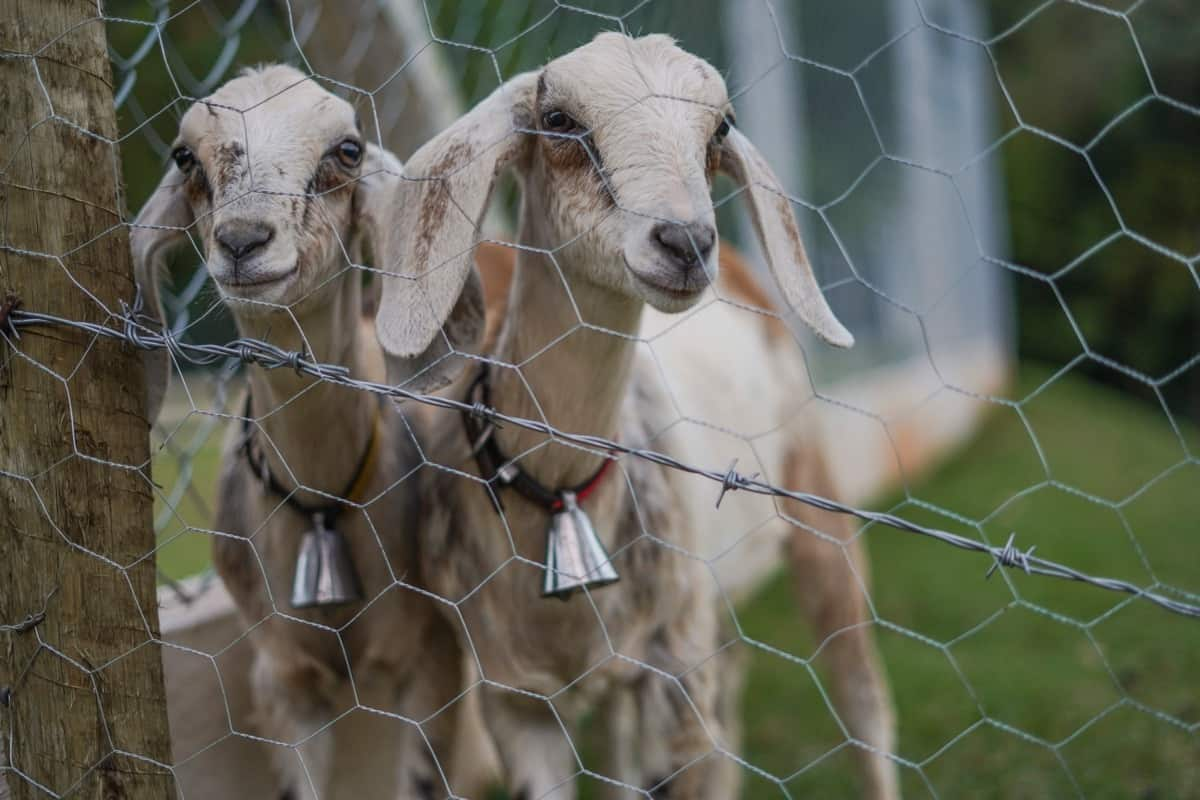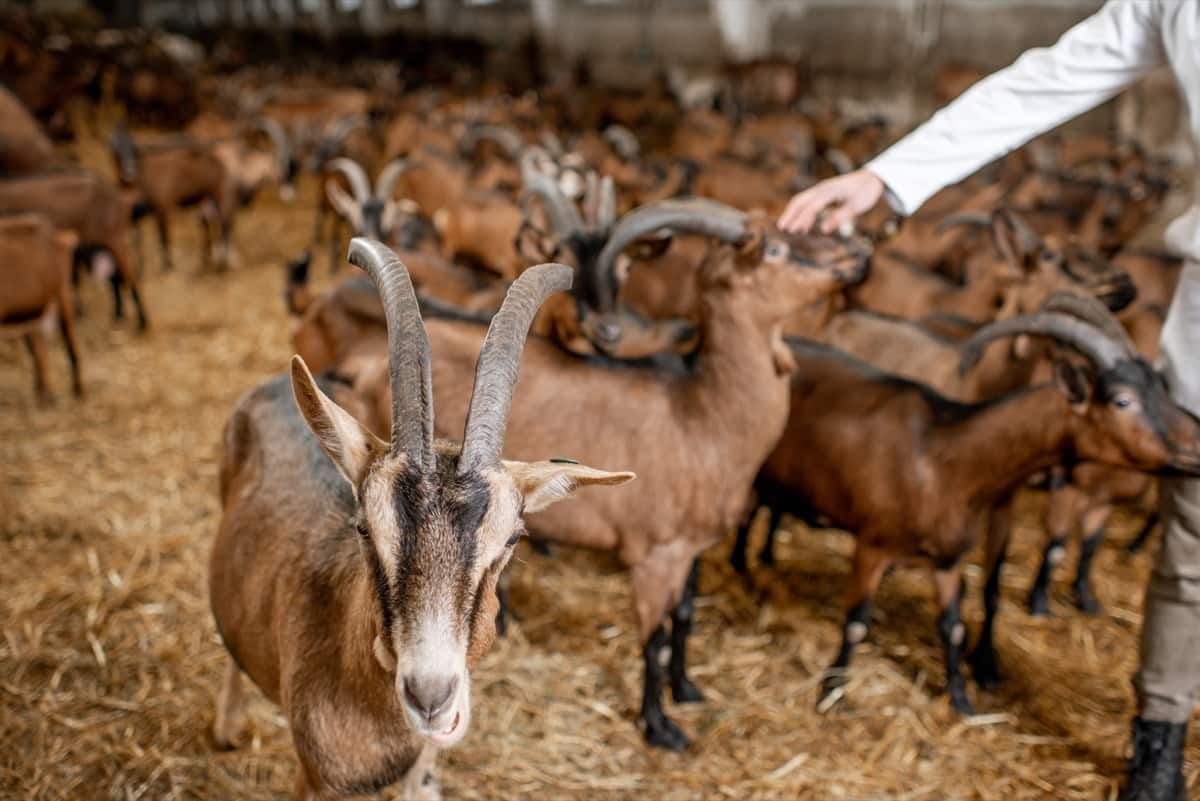Anthrax is a highly infectious and often fatal disease affecting many animals, including goats. It is caused by Bacillus anthracis, which can be found in soil, water, and the environment. The disease is known by various names, such as woolsorter’s disease, splenic fever, charbon, and milzbrand.

In goats, anthrax is mainly characterized by a rapid onset of symptoms, which can be peracute, acute, or subacute. The disease can result in severe septicaemia, where the bacteria multiply rapidly in the bloodstream, leading to fever, rapid breathing, and a rapid decline in the goat’s health.
Anthrax Management in Goats
Causes of Anthrax Disease
Anthrax disease is caused by the bacteria (Bacillus anthracis), a gram-positive, capsulated, non-motile, aerobic, spore-forming, rod-shaped bacterium. The bacterium can form highly resistant spores that can survive in the environment, making it a significant threat to animal and human health.
The spores of Bacillus anthracis can be found in soil, water, and the environment, where they can persist for many years. Animals can become infected with anthrax by ingesting or inhaling the spores or through direct contact with infected animals or contaminated materials such as feed, bedding, and equipment.
Occurrence of Anthrax Disease
Anthrax disease occurs worldwide and is endemic in some countries. It has been reported in defined regions of many countries, including sub-Saharan Africa, Asia, Europe, North America, and South America. The disease is most commonly found in areas where livestock such as goats, sheep, and cattle graze on alkaline soil rich in calcium and nitrogen and with high moisture content.
Recurrent cycles of flooding and evaporation may concentrate spores in particular low-lying regions, increasing the risk of infection. Spores of the causative agent, Bacillus anthracis, are also known to be present in contaminated animal products such as hides, wool, and bone meal, which can further spread the disease.
Disease Cycle of Anthrax in Goat
The anthrax disease cycle in goats typically begins with ingesting or inhaling anthrax spores, which can be found in contaminated soil, water, or feed. Once inside the goat’s body, the spores can germinate and transform into vegetative cells, which can multiply rapidly and produce a deadly toxin.
The initial symptoms of anthrax in goats are often non-specific and can include fever, depression, loss of appetite, and a rapid decline in overall health. As the disease progresses, the goat may develop signs of septicemia, such as rapid breathing, a weak and rapid pulse, and a fever that can exceed 41°C.
In case you missed it: Brucellosis Management in Goats: Disease Symptoms, Treatment, Diagnosis, and Prevention

Symptoms of Anthrax Disease in Goat
The symptoms of anthrax disease in goats can vary depending on the form of the disease, which can be peracute, acute, or subacute. In peracute cases, there may be sudden death without any warning signs. However, in acute cases, the following symptoms may be observed:
- Fever
- Anorexia
- Labored breathing
- Increased heart rate
- Ruminal stasis
- Reduced milk production
- Bloody discharges from orifices like the mouth, nostrils, anus, and vulva
- Diarrhea or dysentery
- Oedema and swelling of the tongue, throat, flank, and perineum (anus, vulva)
- Abortion in pregnant animals
- Blood-tinged milk
Diagnosis of Anthrax in Goat
- The diagnosis of anthrax in goats is based on a combination of clinical signs, laboratory tests, and epidemiological history. The clinical signs are highly suggestive but not specific to anthrax. Therefore, laboratory tests are necessary to confirm the diagnosis.
- The McFadyean reaction is a simple and rapid test that involves staining blood smears from the ear tip with polychrome methylene blue stain. The presence of short chains of truncated blue-colored rods surrounded by pink capsules confirms the presence of B. anthracis.
- Culturing the organism on Goat or Ox blood agar is another reliable method for diagnosing anthrax. The colonies of B. anthracis on these agar plates show a flat, dry, grayish appearance with a “ground glass” texture after 24-48 hours of incubation. PLET (Polymyxin-lysozyme-EDTA thallous acetate) medium is a selective media used to isolate B. anthracis.
- Ascoli’s thermo-precipitation test is another commonly used test to detect antigens of B. anthracis. Other tests such as agar gel immunodiffusion, complement fixation test, ELISA, and immunofluorescence tests are also available, but they are not routinely used due to their low sensitivity.
- PCR tests can be used for direct detection of the organism from decomposed samples and can also be employed to target the pXO1 and pXO2 plasmids to confirm the virulence of isolates from the culture.
Treatment and Control of Anthrax Disease
- The treatment of anthrax in goats primarily involves the administration of antibiotics, such as penicillin or oxytetracycline, in the early stages of the infection.
- These antibiotics effectively kill the bacteria’s vegetative form before they can transform into more resistant spores.
- In cases of severe infection, anthrax antiserum can also neutralize the toxins the bacteria produce.
Preventive Measures of Anthrax Disease in Goats
- Annual vaccination with the Sterne strain lives spore vaccine in endemic areas.
- Restricting movement of animals and their products in non-endemic areas to prevent the spread of infection.
- Avoiding transfer of feed and bedding materials from affected herds.
- Disinfecting premises with sporicidal disinfectants like formalin, sodium hydroxide, or peracetic acid and placing foot baths containing these disinfectants at the entrances of affected farms.
- Fumigating contaminated buildings with formaldehyde before removing bedding materials.
- Proper disposal of carcasses and infected materials through deep burial or incineration.
Conclusion
Anthrax can cause sudden death without warning signs, making early detection and diagnosis crucial for effective treatment. Diagnosis is based on clinical signs, microscopic examination, and culture of the organism from blood or tissue samples. Treatment with antibiotics and antiserum is most effective when given in the early stages of the disease, and vaccination is recommended as a preventive measure.
In case you missed it: Tetanus Management in Goats: Disease Symptoms, Treatment, Diagnosis, and Prevention

Disease control involves strict biosecurity measures, proper disposal of infected materials, and disinfecting of contaminated areas. Goat farmers and veterinarians need to be aware of the symptoms, diagnosis, treatment, and prevention of anthrax in goats to prevent outbreaks and protect both animal and human health.
- Beneficial Insects in Pest Management
- Natural Solutions for Pest Control in Flower Gardens
- Types of Fungicides Used in Agriculture
- Common Issues in the Fruit Development Stage of Pomegranate Farming
- Fruit Development Issues in Papaya: Easy Solutions and Treatment
- Soil-Borne Diseases and How to Protect Your Plants
- Practices to Prevent Disease Spread in the Garden
- From Wilted to Thriving: How to Treat Root Rot Naturally in Houseplants
- Natural Remedies to Cure Brown Spots on Fig Tree Leaves